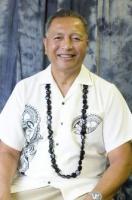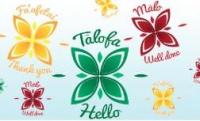Fa’atili Iosua Esera is the principal of Sutton Park School in Mangere, and the president of Faalapotopotoga mo le aoaoina o le gagana Sāmoa i Aotearoa (the organisation for teachers of Samoan in Aotearoa).
In this blog Fa’atili explains some important aspects of Samoan identity and offers some suggestions on how we can support Samoan language and culture in our schools and classrooms.
Ma’au i lou ofaga; maua’a lou fa’asinomaga, Keep your identity alive, to thrive
The main contribution that Samoans can make in a globalised world is being Samoan. Successful Samoans thrive in different environments due largely to being grounded with a firm sense of who they are. They are often very connected, have an acute sense of kinship, know the value of being Samoan and are able to maximise their networks to achieve desirable outcomes.
It is critical when strengthening your identity that you are well aware of the components of that identity, and are therefore deliberate in growing awareness of each component. This blog post is an attempt to point out some important aspects of Samoan identity.
What's in a name?
A name for many Samoan students is a statement of their identity or origin.
- Names are associated with families, villages, and districts. These names are passed down from one generation to the next through word of mouth, in stories, folklore, lyrics of songs, and in poems.
- Some families have surnames that are their family titles. This can mean that two students in the same class or school, who are not related, have the same surname. Having the same surname can mean that these students are from the same extended family associated with that ‘matai’ title.
- Bestowing titles for generations has been through service, as well as blood connection.
- There is also the practice of naming children after landmarks, the family’s traditional house or compound, the female or male honorific associated with their families, special artefacts, or an important event.
Matai titles
Samoan matai titles tell you what villages a person is connected to, their place of origin, and other names associated with their families. It is often said that a person has more roots than all the trees put together. This is especially so with Samoans.
- Each Samoan has connection to four or more ‘matai’ titles, one for each grandparent.
- Extended families stretch well beyond that, where one person can claim to be from more than four extended families.
- Samoan students with mixed parentages can still claim to be from four villages when tracing as far back as their great grandparents.
Return to top
Families
Knowing the families a child belongs to contributes much to their understanding of herself or himself. This will lead to knowing all other aspects of who they are, their malae, maota, villages, rivers, lakes, mountains, sa’otama’ita’i, sa’oaumaga, fa’alupega, igoaipu, toga, lagi and many other aspects of being Samoan. A Samoan without an extended family, is rare.
There is a level of commitment to families that Samoans are brought up to appreciate.
- As in Māori culture, the notion of whanaungatanga (sense of family connection) is strong with Samoans.
- Making a contribution when there are family occasions is an expectation of Samoans.
- Samoans have to put aside time to be at family occasions and have resources to contribute.
Villages and districts
It is most beneficial for the child growing up to know his/her villages or districts. To know your villages and districts of origin gives you a great sense of connection, to real estate that is forever yours. A great feeling in an uncertain world!
- Each village has its own formal honorific and formal structure that will be beneficial for students to know.
- Parents and extended family will be the main sources of this information.
Gagana Sāmoa
O lau gagana, ‘o lou fa’asinomaga, your language is your identity.
Samoan language defines Samoan students and is a window to fa’asamoa (Samoan culture). The risk to fa’asamoa is due to the gradual loss of Samoan language. The maintenance of Samoan language is essential for the retention and ongoing use of fa’asamoa.
There is no learning without language and learning for many Samoan students in New Zealand has been marginalised through the neglect of Samoan in schools. The language for learning in most New Zealand schools is English. Native speaking Samoan students starting school have to first develop a level of English proficiency to learn. Many fall behind their peers after the first year, and they rarely recover from that delay. Despite the drive from the Ministry of Education, the Education Review Office and schools themselves to have the children at the heart of their curriculum design and delivery, many Samoan students are failing due to neglect of Samoan and fa’asamoa for learning.
Teachers and leaders can help foster Samoan language in their classrooms and schools by:
- labelling items in their environment
- learning some simple phrases and responses.
Use these Samoa language cards to learn simple phrases.
Fa’asamoa
Fa’asamoa is defined largely by the values Samoans uphold and the conceptual frameworks they prefer. These values are to do with relationships with others, the environment, and God. Maintaining ‘le va fealoa’i’ is at the heart of being Samoan. We were brought up to walk, talk, sit, and maintain a level of relationships with others to a degree of ‘sacredness.’
There are also conceptual frameworks in terms of making decisions, relating to others, and having conversations to name a few, that many use in their daily lives. These frameworks revolve around collective decision-making, shared leadership, and inclusiveness. These are not often reflected in other parts of New Zealand society, including schools.
I am grateful to the work done by Māori educators such as Mason Durie and Russell Bishop around “Māori achieving success as Māori” because it has paved the way for Samoans to be successful as Samoan. And that’s not just singing and doing the sasa.
At Sutton Park School we try to incorporate the culture and values of the Samoan bilingual unit right across the school to reflect Samoan life and replicate what families do at home.
- We share lotu o mea’ai (grace) before meal times.
- We use polite and respectful language.
- Students practice and follow a format of Samoan whaikorero (fai lauga) or oratory.
Return to top
Christianity
Being a Christian is important to being Samoan.
- ‘Sāmoa is founded on God’ is the mission statement upon which many Samoans are reared.
- Many live their lives according to the founding principles of Christianity.
- A calculated 90% of Samoan students in any school are part of a Christian church group.
Conclusion
The theme for Sāmoa Language Week this year is Ma’au i lou ofaga; maua’a lou fa’asinomaga, Keep your identity alive, to thrive. This theme asks Samoan students and their parents to put themselves at the heart of what they do and learn in New Zealand. This will contribute greatly to the children’s learning success, their sense of identity, and their contribution to New Zealand society.
Putting others ahead of themselves is important to fa’asamoa, so this theme can create some tension. However, as we become more globalised, there is a need for Samoans to know themselves first and remain connected to who they are, as that is their main contribution to the globalised world.
Fa’atili Iosua Esera
Sāmoa language week
Our event page is packed with ideas, links, and resources to help you celebrate and learn gagana Sāmoa with your students and school community.
Pasifika dual language books
The Pasifika dual language resources are designed to support the early language and literacy learning of Pasifika new entrant students in English-medium classrooms. Teacher and parent support material accompanies these resources. Many of the dual language books are available as PDFs and all the books are available as MP3 audio files.




